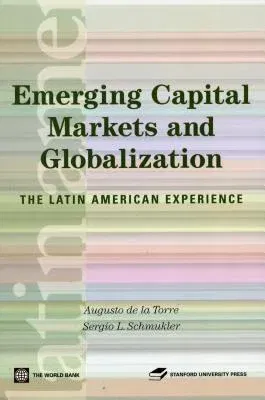Augusto De La Torre
(Author)Emerging Capital Markets and Globalization: The Latin American ExperiencePaperback, 27 October 1960

Qty
1
Turbo
Ships in 2 - 3 days
In Stock
Free Delivery
Cash on Delivery
15 Days
Free Returns
Secure Checkout

Part of Series
Latin American Development Forum
Part of Series
Latin American Development Forums
Print Length
224 pages
Language
English
Publisher
Stanford Economics and Finance
Date Published
27 Oct 1960
ISBN-10
0804757194
ISBN-13
9780804757195
Description
Product Details
Book Format:
Paperback
Country of Origin:
US
Date Published:
27 October 1960
Dimensions:
22.86 x
16.38 x
1.3 cm
ISBN-10:
0804757194
ISBN-13:
9780804757195
Language:
English
Pages:
224
Publisher:
Weight:
322.05 gm